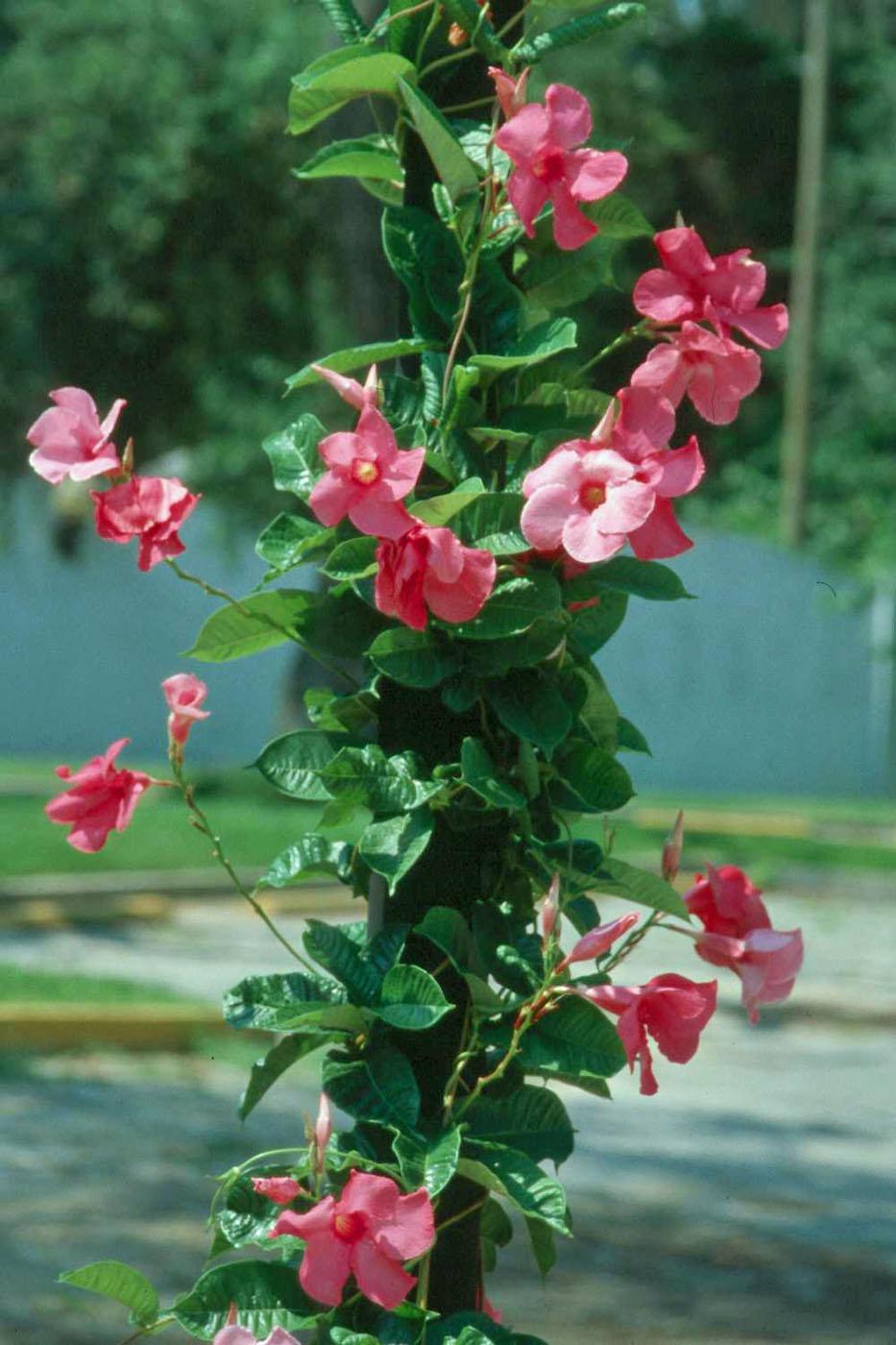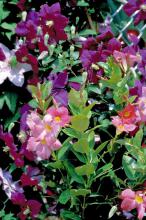Information Possibly Outdated
The information presented on this page was originally released on June 9, 2005. It may not be outdated, but please search our site for more current information. If you plan to quote or reference this information in a publication, please check with the Extension specialist or author before proceeding.
Nonstop blooms make Mandevilla unbeatable
By Norman Winter
MSU Horticulturist
Central Mississippi Research & Extension Center
My neighbor down the street already has everyone gawking with a spectacular Mandevilla on her mailbox. It's been that way for a few weeks, yielding dozens of blooms every day.
Many gardeners shop for plants that will bloom all summer and right up until fall. That's a pretty tall order to fill considering our extreme summer climate, but at the top of that list has to be the hybrid Mandevilla Alice du Pont.
The Mandevilla is from Brazil, but at the garden center you will get the feeling it is one of the locals. It is related to the Allamanda vine with yellow, bell-shaped flowers and to plumeria, the flowers that Hawaiian leis are made of.
Alice du Pont has large, pink, bell-shaped flowers produced on a vigorous vine. The dark, glossy leaves have a leathery feeling.
As with almost every other plant I write about, it needs well-drained soil to survive. For best flowering, you will want your Mandevilla to receive at least six to eight hours of sunlight a day. Full sunlight is better.
Since it is such a vigorous vine and flower producer, it needs small doses of fertilizer every two to three weeks. Use a balanced, water-soluble fertilizer. Be sure to maintain moisture during the hot, dry times of the summer. A prolonged period without water may prove fatal to the plant.
I have even seen Mandevilla planted in a large basket hanging on a long chain at least two stories high. The Mandevilla was growing up the 6- or 7-foot-long chain, and you really couldn't see the chain for the leaves and the flowers. A tri-color ornamental sweet potato flowing out of the basket in all directions helped set off the Mandevilla. One of the three colors was the same pink as the Mandevilla.
A couple of years ago I saw a giant, iridescent blue-flowered clematis right next to the Mandevilla. This mixture of Southern perennial and Brazilian tropical was bold and spectacular.
If you have lattice structures around the house, the Mandevilla is one plant that is a must. Its ability to climb and bloom until fall makes it a winner. Because it is a tropical from Brazil, gardeners on the Coast -- probably south of I-10 -- can get it to establish permanently. The rest of us will have to either treat it as an annual or give it winter protection.
Before bringing it indoors, cut off all growth to make it the desired shape. It will not bloom indoors unless it is in a sunroom. Our goal is simply to hold the plant until the next planting season.
Another method, and probably the easiest for most of us, is to cut it back to about 6 inches and provide as bright a light as possible and minimal water. Do not fertilize during this time. As the plant grows, keep it pinched back to leaf axis so it will develop a bushy habit.
In the spring, re-pot or plant in the landscape and resume a fertilization program. The Mandevilla is a hot buy right now, so take advantage of the season.




